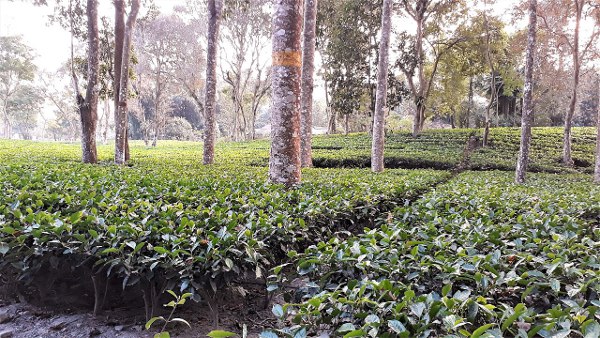
Wikimedia Commons, copyright free image
A tea plantation in Assam, with the tea plants shade grown under canopy trees.
.
All content included on this site such as text, graphics and images is protected by U.S and international copyright law.
The compilation of all content on this site is the exclusive property of the site copyright holder.
Historical Food Preservation: Tea and Sugar
Friday, 6 June 2025
A notice for an online series of presentations about historical food preservation caught my attention. As did my mother, as does my daughter, I have made sweet preserves: jams, jellies, fruit butters, marmalades. And I have made pickles too. Presented by the New York Botanical Garden’s Humanities Institute and the Huygens Institute for Dutch History and Culture, a monthly seminar series engages with a question that has obsessed humans for millennia—how do we preserve food? Bringing together historians of science, art, and capitalism, these conversations will tackle this issue from a multidisciplinary and transregional perspective. The series is moderated by Dr. Marieke Hendriksen (Huygens Institute) and Dr. Lucas Mertehikian (NYBG), and coordinated by Ph.D. (c) Edurne De Wilde (Huygens Institute/Leiden University).
There will be one more presentation, on Brining, Pickling, and Smoking. Originally scheduled for May 27, will now take place on June 24; 9:30–11 a.m. ET
To register for this online, free talk go to https://www.nybg.org/event/historical-food-preservation/
First up is Romita Ray, art historian, educator, and curator, currently Associate Professor of Art and Music Histories at Syracuse University.She has us thinking about tea. The tree, Camellia sinensis, can grow 40 feet tall. Difficult to pluck the tender new growth. Cut back, grown as a bush, "quasi bonsai" she tells us, making the tea plants leafier and easier to pluck. It is done by hand - machinery is not suitable. Tea plantations were, originally, mono cultures, landscapes clear cut, destroying forests, impacting wildlife. Now there is more interest in preserving biodiversity,. There are efforts to "rewild" tea plantations by using tall trees to provide some shade. One popular choice is Albizia odoratissima as it adds nitrogen to the soil.

Wikimedia Commons, copyright free image
A tea plantation in Assam, with the tea plants shade grown under canopy trees.
Tea leaves must be packed in unscented wood tea crates, as tea leaves will absorb scents. This is actually taken advantage of, jasmine tea may be packed with jasmine flowers.
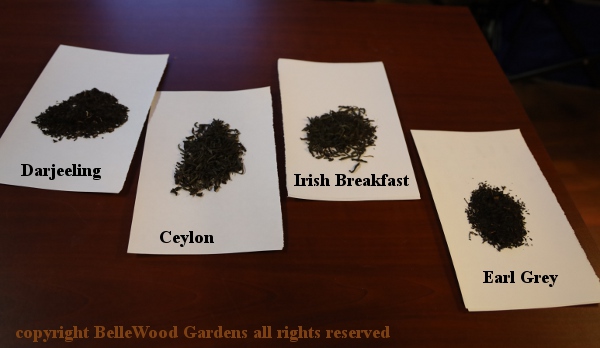
Green and black tea is fermented in Assam, with tea blending done in Europe.
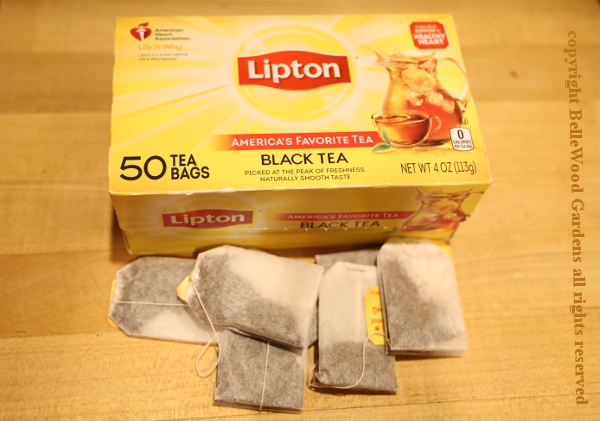
Tea bags, tea in little bandages. Tea combined with herbs. Online I found fancy blends

with strange names: blueberry merlot, African solstice, caramel nougat. No thank you.
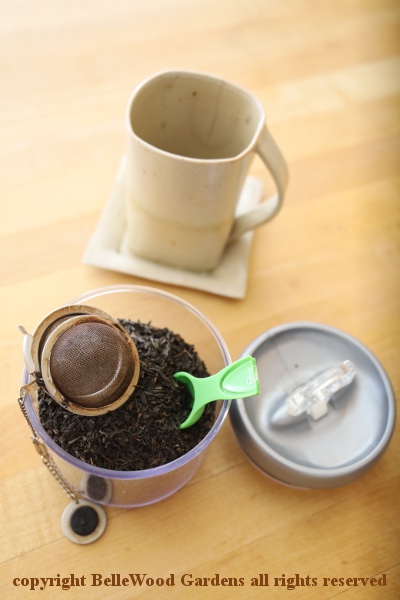
I will enjoy Earl Grey, a black tea blend flavored with bergamot oil
from the rind of the bergamot orange, a Mediterranean citrus fruit.
For more than a decade Ulbe Bosma has been professor of 'International Comparative Social History at the Free University of Amsterdam. His highly praised book, "The World of Sugar: How the Sweet Stuff Transformed Our Politics, Health, and Environment over 2,000 Years" was published by Harvard University Press.In his article about the history of sugar Ulbe Bosma points out that "For most of human history, crystalline sugar simply did not exist, and people were happy with honey, sweet beans, glutinous rice, barley, or maple syrup. More than 2,000 years ago, however, peasants in Bengal learned how to boil cane juice into a raw dark sweet mass. But that alone didn’t drive sugar consumption. Indeed, just two centuries ago even in the wealthiest countries, people rarely consumed more than a few kilograms a year—while today, in many high- and middle-income countries, people annually consume 30 to 40 kilograms, and in the U.S. more than 45 kilograms." To translate kilograms to pounds, 45 kilograms is just a wee bit over 99 pounds.
I would not be surprised if Robert Kennedy, Jr., United States Secretary of Health and Human Services, would like to see sugar labeled as "white death." He makes statements such as, "There's things that will never be able to eliminate like sugar. And sugar is poison, and Americans need to know that. It is poisoning us.”
To refine the sweet sap into granular sugar: sugarcane is cut, crushed, and must be processed within 48 hours. Rare and costly, sugar was first used as medicine by apothecaries. It is a "hostile" crop - the leaves are sharp and damaging to the cane cutters skin. Who in the early centuries were slaves. Snakes and rats and other vermin live in the cane fields. Today cane is harvested with mechanized equipment.
White cane sugar is additionally refined. Historically, bone char was often used as a decolorizing and deashing agent, particularly in cane sugar as this contains more colored impurities. Bovine charcoal is made from cow bones - but not, these days, skull or spinal column because of concerns about mad cow disease. Beet sugar is consistently vegan because it does not require the use of bone char during its manufacturing process. Brown sugar, available in grocery stores, is produced by adding molasses to refined sugar. So if the regular sugar utilizes bone char, the brown sugar made from it does too. Brown sugar does add a subtle difference compared to regular white sugar, and is often used in baking. It is a staple in cooking too, often added to sauces, marinades, and even in making bacon.
My interest caught, I begin reading labels previously ignored. Examining the labels on bags of sugar at a grocery store I learned that Domino brand does specify that it is cane sugar. There was a smaller bag of Domino golden sugar. Less processed than white granulated sugar, it is considered vegan.
I think about items that obviously contain sugar such as sweet baked goods and candies.
Sugar can act as a preservative. Just think of all the sweet preserves - jam, jelly, marmalade.

Rings of candied pineapple. Glistening red candied cherries. Candied citron melon halves.
Early every November I order candied fruit from The Larder in Doylestown, Pennsylvania.
How else would I be able to bake my holiday fruitcakes, as I have been doing for decades.
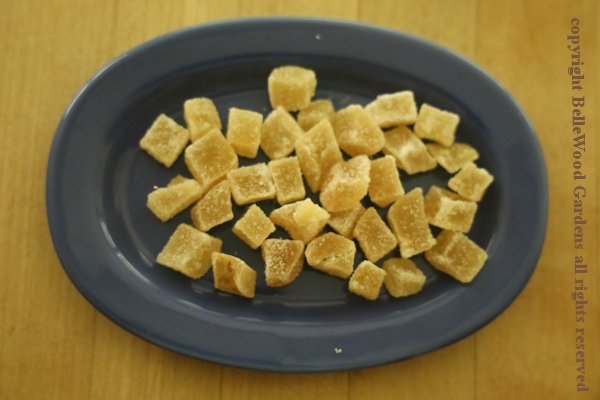
Or confiture - in this instance ginger peeled, cut, simmered in increasing density of sugar to preserve it.
.
But these are food things that I know and expect to be high in sugar. It is when sugar sneaks in stealthily, where I don't.
My homemade granola - dry oatmeal, a sliced banana, broken walnut meats, dried cranberries, some milk . . . Wait!
Never bothered to read the label on the bag of dried cranberries. But when I do I learn the second ingredient is sugar.
Back to the presentation. Overproduction of sugar very much reduced the price. It is well known that sugar causes obesity. Empty calories with no protein, fiber, or other nutrient. Just calories. In 1700, a person consumed about 4 pounds of sugar per year. By 1800, that had risen to about 22 pounds per year. By 1900, people consumed about 90 pounds per year. By 2012, over 50% of Americans consumed a half pound of sugar per day – or, over 180 pounds of sugar per year. And it is not just desserts like ice cream or candy. There is sugar in ketchup and barbecue sauce and other condiments. In baby food. Sweetened yogurt. Breakfast cereals, including commercial - and perhaps sometimes homemade - granola.
Interesting presentations by authorities in their fields. I learned that there is more to think about, especially concerning sugar.
There is one more presentation in this series: Brining, Pickling, and Smoking. Originally scheduled for May 27, will now take place on June 24; 9:30–11 a.m. ET
To register for this online, free talk go to https://www.nybg.org/event/historical-food-preservation/
Back to June
Back to the main Diary Page